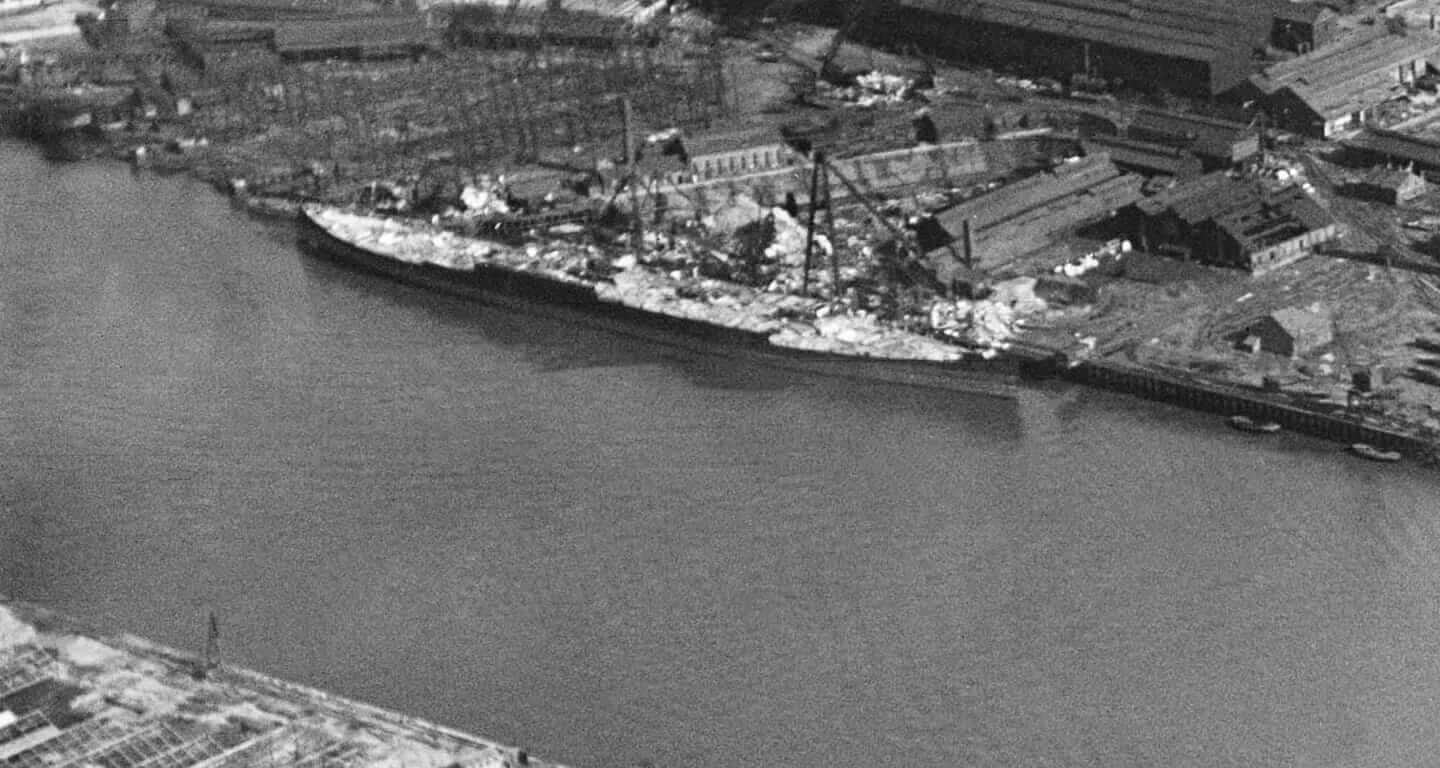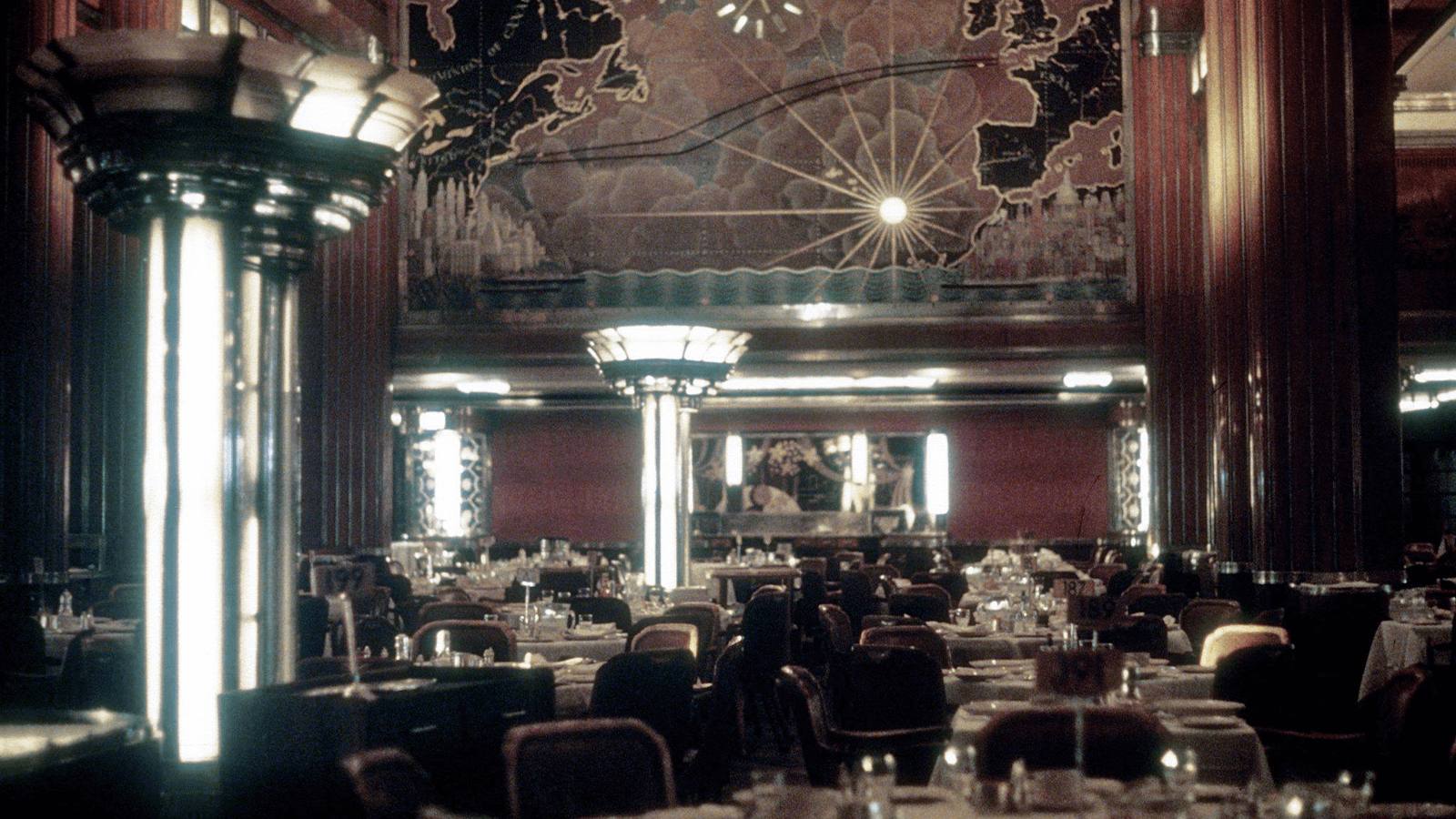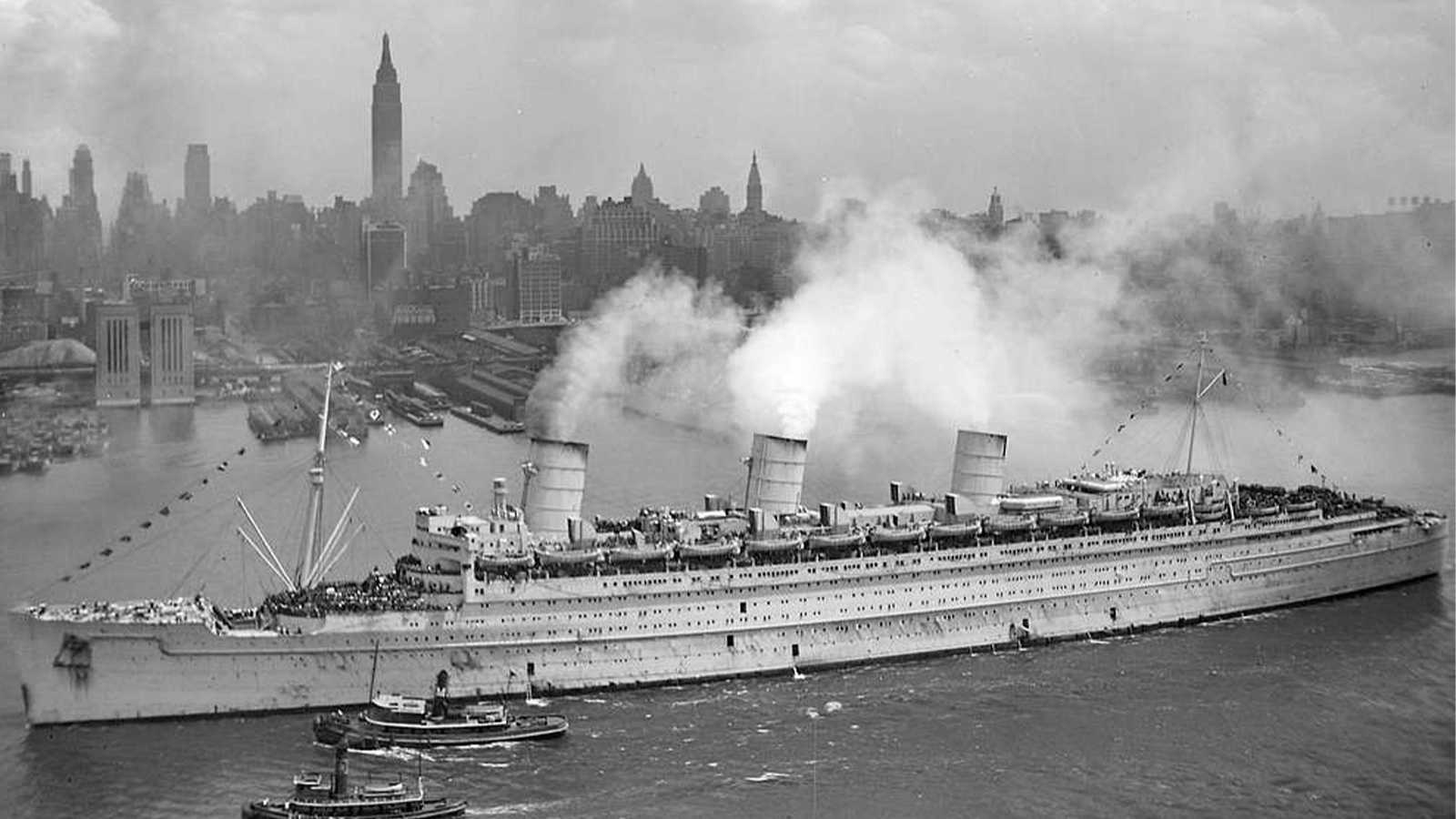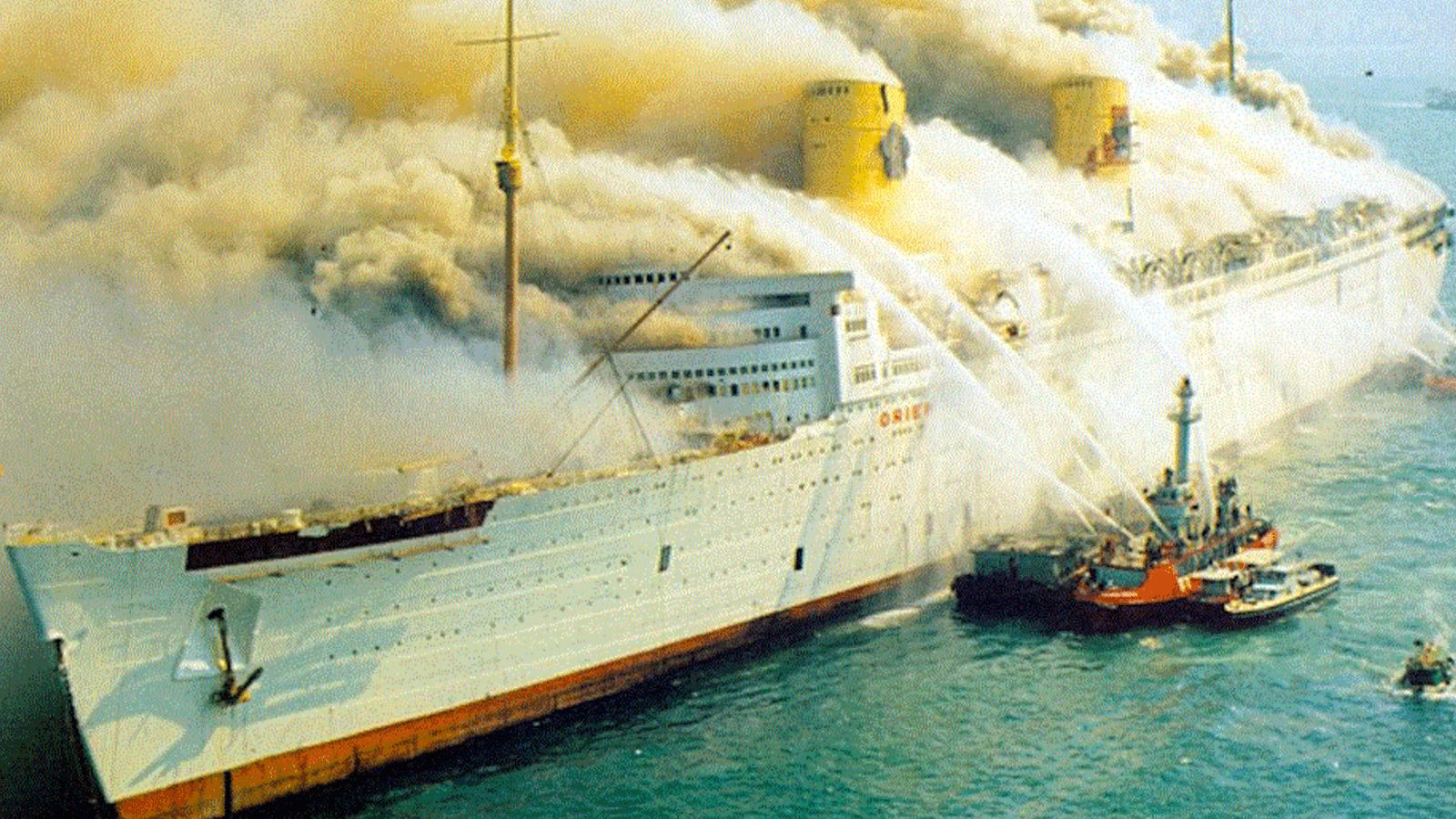
How RMS Queen Mary was saved from scrap
As the golden age of Transatlantic travel came to an end, the revered RMS Queen Mary was destined for a violent death in a Japanese breakers yard. Yet, the Americans had something to say about that
Forget RMS Titanic. Bin all notion that SS Normandie ruled the waves. The most influential and recognisable ocean liner to have sailed the Atlantic was - undoubtedly - Cunard's sterling RMS Queen Mary.
A direct result of the merger between Cunard and White Star Line, the Clyde-built cruiser laughed in the face of economic consequences, setting new standards that had otherwise slipped; courtesy of the Great Depression.
The ship proved herself to be a reliable and steadfast addition to Cunard's fleet, in both peacetime and war - but that wouldn't save her in a changing world. With the increased popularity and affordability of air travel, the golden era of ocean-going opulence quickly dissolved.
RMS Queen Mary rapidly gained status as a glorified money pit, with each passing year securing her date with the breakers' yard. Reluctantly, in April 1966, Cunard announced they’d retire their famous ship in favour of the new kid on the block; the Clyde-built QE2.
Soon enough, the Queen Mary was for sale. Cunard didn't set any rules for sale - the highest bidder received the title deeds. End of. Their ship's fate didn't really concern them, but it did concern one particular city in North America. Yet, they would have a fight on their hands.
Why older ships were scrapped
Unsurprisingly, when Cunard announced the sale of the RMS Queen Mary, a plethora of bids streamed in from various scrapyards across the world.
This process was sadly the usual fate for a decommissioned ocean liner, even one that boasted the same public recognition as God, and had previously contributed a significant wartime effort to gain the affection of thousands.
You only need look to Cunard’s Mauretania and White Star Line’s RMS Olympic for similar vessels that went to the scrapyard despite public protest. Both ships possessed notable merit in their own right, yet were torn down without dignity. They now exist only as pictures in the history books.
Mauretania even attracted a desperate plea for mercy. One voice cut through the squabble more than most, coming from none other than US President Franklin Roosevelt - but Mauretania's fate remained unchanged. Pondering the golden era of glamour and travel, what we wouldn’t give to have these ships with us now. For shame.
However, more often than not, an ageing ocean liner quickly transcends from being an asset to an expensive financial liability. This is particularly true if economic circumstances are not favourable as a liner moves into retirement.

Both the celebrated Mauretania and the indefatigable Olympic were waved off during the cash-strapped years sponsored by the Great Depression - coinciding with new shipping laws that pushed regulations beyond the capabilities of older designs.
Rather than pour non-existent funds into a liner that required major upgrades, it was more cost-effective to sell each ship for scrap and begin work on its replacement.
There is, of course, money to be made from the materials contained within an ocean liner; hence the keen interest of scrapyards when another becomes available. Especially the big, expensive ones packed full of luxurious fixtures and fittings. Better still if they were a record-breaker, as Queen Mary undoubtedly was, having claimed the coveted Blue Riband.
Beyond that, anyone wishing to keep a retired liner both in one piece, and afloat, takes on a whole other ball game. Despite the RMS Queen Mary’s elevated profile, elaborate Art Deco styling and 1930s decadence, anyone daring to buy the liner with preservation in mind would do so with significant risk.

Fight (or flight) for the RMS Queen Mary
The first aerial connection between Europe and America opened for trade in 1961. Passengers could suddenly choose between a week-long jaunt at 30 knots aboard a cruise liner, or a direct flight at 500 knots while seated in a newfangled aeroplane.
That choice - between fashionable air-borne fad and an elegantly comfortable ship - ruled in the favour of airline tickets. Cunard's passengers were now flying rather than sailing, and the customer base was migrating towards leisure rather than a need to traverse continents.
With upgrades required for utilising RMS Queen Mary's feasible use for another decade, the ship was on borrowed time. By 1965, all of the Cunard fleet were operating at a loss. With memories of the enforced merger between White Star Line and Cunard still vivid, a rapid plan of action was conceived.
Desperate to finance the upcoming QE2 at Brown's shipyard in Glasgow, Cunard resorted to mortgaging their fleet of then-current ships. Yet, courtesy of a toxic combination - age and deterioration, lack of public interest, fuel inefficiency, a changing market and the challenging domino-effect of the 1966 national seamen's strike - Cunard opted to ditch RMS Queen Mary completely.
On 27th September 1967, the Grand ol' Lady made her last transatlantic crossing. With a grand ceremony and thousands of wellwishers festooning Southampton dock, the historic ship was officially retired following the completion of her 1,001st voyage across the North Atlantic.

As the ocean folded into the stern's wake, seafaring travel changed forever. There was no place for RMS Queen Mary upon the seas in the modern world. These would be her final movements, with every mile tasting wholly bittersweet.
Captain John Treasure Jones was moved to tears as he handed Queen Mary over. It felt as though he was losing an extension of himself, yet Jones could sleep well that night - for RMS Queen Mary wasn't destined for scrap. Rather, she had a new home in the sun.
It had been a close-run thing, however. From the moment RMS Queen Mary was earmarked for sale, scrap tycoons feverishly enquired as to her purchase price. There was serious money to be made in dismantling the proud Queen, and profit chasers knew it.
Cunard didn't hold out. They had no plans for conservation and made little-to-no effort when hunting down a port-based retirement for their ex-flagship. It was all about moving forward with the brand-new QE2.

Don't judge them too harshly. Companies rarely kept any of their heritage back when Sean Connery was James Bond and The Beatles ruled the airwaves.
As the swinging Sixties approached its' crescendo of style-meets-reality, the past was something to be left behind for historians; rather than a basis for future marketing.
Sure, RMS Queen Mary had recently been the star of Frank Sinatra's Hollywood blockbuster Assault on a Queen (1967), but all that heritage wouldn't keep Cunard afloat as the 1970s beckoned. It hadn't saved the likes of the African Steamship Company or once-hot rivals White Star Line.
As such, when a Japanese scrap merchant pushed forward with an eye-watering offering, the Queen Mary's fate appeared to be sealed. She would be piloted to the Far East before beaching at the breakers' yard and being shredded to ribbons.

A new home in Long Beach
As the deadline ticked ever closer, swathes of hopeful investors proposed a range of weird and wonderful concepts. Certain businessmen opted to turn RMS Queen Mary into a giant immigrant ship and dispatch her to Australia. The City of New York wanted the ship as a floating high school for the Brooklyn waterfront, and poverty-stricken British firms gathered resources to keep her on UK shores.
Then came the death knell. Japanese scrap merchants stole the headlines with an offer of $3,250,000 (roughly $50 million by today's inflation rate). This was around the same time that the Queen Mary's sister ship - RMS Queen Elizabeth, also being ditched - was sold to a Hong Kong business tycoon and destined to become the floating Seawise University.
Disaster wasn't far away, and akin to the fate of SS Normandie, Queen Elizabeth caught fire and sank (now suspected to be arson in the name of insurance fraud).
As she slowly capsized under the weight of the firemen's water jets, her future was rudely cut short. Following attempts to scrap the wreck in 1973, her remains are now buried under reclaimed land for a new cargo dock. 
Of all culture's great seafaring juggernauts, the Queen Mary was suddenly the only survivor. And it looked as though she, too, would be destroyed. The world braced for a final goodbye, but then - in a move befitting Clint Eastwood's onscreen mantra - the Californian city of Long Beach submitted a rescue offer at the last minute.
Cunard bigwigs naturally accepted the fresh $3,450,000 bid (roughly £52.5 million by today's standards), sending the Japanese home empty-handed. Not that we hold a grudge or anything, but the Japanese had already scrapped SS Île de France. They had caused enough harm to the shipping enthusiast. Anyway, moving on...
Long Beach’s bid equated to Queen Mary earning just over one dollar per mile that she’d sailed (over 3 million miles) in her 31-year oceangoing career. As far as deprecation goes, that's certainly a claim to fame. Let's see your second-hand Audi A3 achieve similar.

Arriving home
With the ship saved and a new home in Long Beach secured, RMS Queen Mary was chartered by a New York travel agency for a final sentimental voyage. Tickets sold fast for the last trip, carrying nostalgic passengers from Southampton to Los Angeles via South America.
After 40 days at sea, Cunard's ex-flagship arrived in Long Beach on December 9, 1967. The city wished to offer Queen Mary somewhere permanent to reside where, in turn, she could serve as a tourist attraction and hotel. Now the real fun began.
Her arrival was met with a fanfare usually reserved for members of society's elite. Boats, yachts and schooners sailed out to meet the Queen Mary as she approached, with thousands of people clamouring over themselves to cheer and celebrate.
The impressive wave of noise was silenced - if only for a moment - as the ex-Cunard liner bellowed her whistle to mark the final turn of her engines. Her existence as a cruise liner was over, with only one official meal left to serve.
After the last-ever passengers breakfasted like Royalty, they disembarked amid mixed feelings. The journey had been unbelievably good, but it was all tinged with a poignant sadness. As the crew shortly went ashore thereafter, that sentiment lingered. As did the mess they left behind.
Beds were left unmade, bins left unemptied, tables left uncleared and the kitchen was abandoned as they were at the end of breakfast service. All that clean-up was for the ship's new owners to deal with.
Although Captain John Treasure Jones had his cheeks stained by tears, amid the building tension of nostalgia felt by everyone for a ship now 'lost' to retirement, the liner could look forward to a new chapter; rather than becoming bean tins.
The city's hopes and intentions rested on the ship earning her keep. Plans had been drawn for attracting additional business and revenue into the area through the ship's presence and facilities. Yet, there was money to be spent first.
After the last individuals reluctantly took leave along the gangway, the ship underwent a $72 million (roughly $633 million) refit - relieving the Queen Mary of her propellers and engines, while subsequently transforming the interior, cabins, public spaces and open decks into a hotel and business centre.
Officially opened in May 1971, the ship has remained there ever since. Not to say that there hasn't been turbulence in the six decades following her arrival.
From corrupt management, faked repairs and mistreatment, to weather-worn damage and deterioration, the Queen Mary has often been under threat after an unbelievable stretch of mismanagement. However, that's a story for another time.
Now sheltering in Pier J at Long Beach, with a protective breakwater wall surrounding her, the Queen Mary has subsequently plied her trade as a floating hotel, museum and restaurant. She's ultimately proven her worth. Long may she remain.



